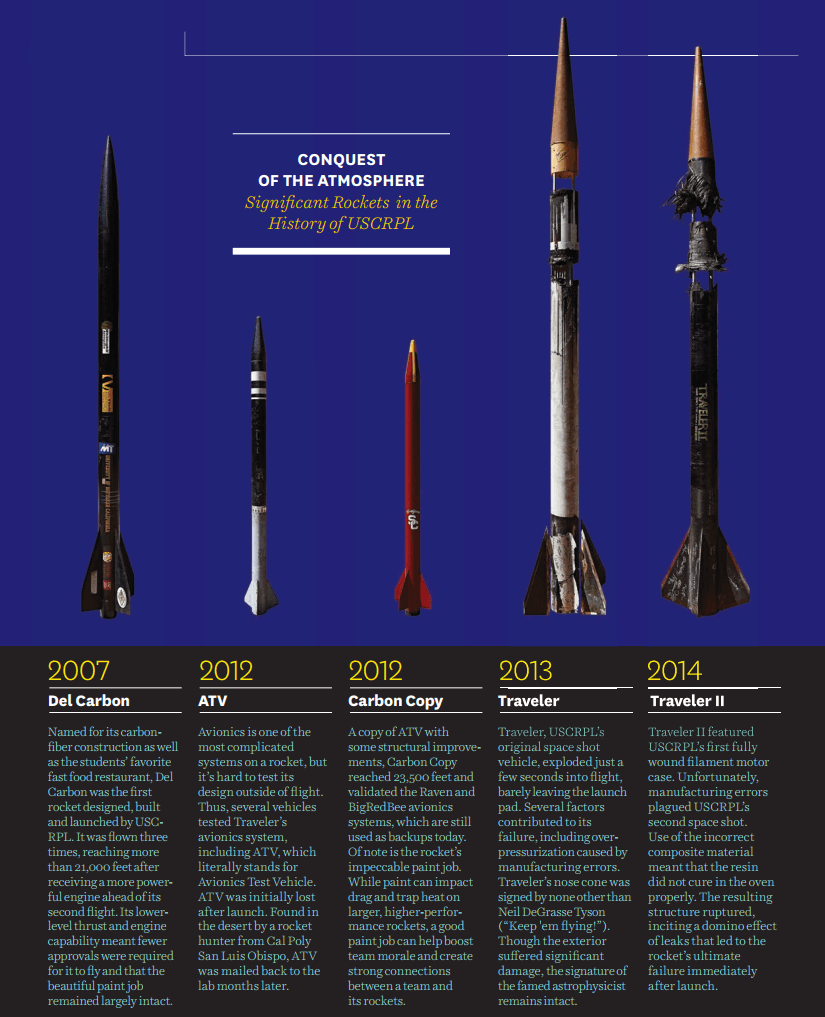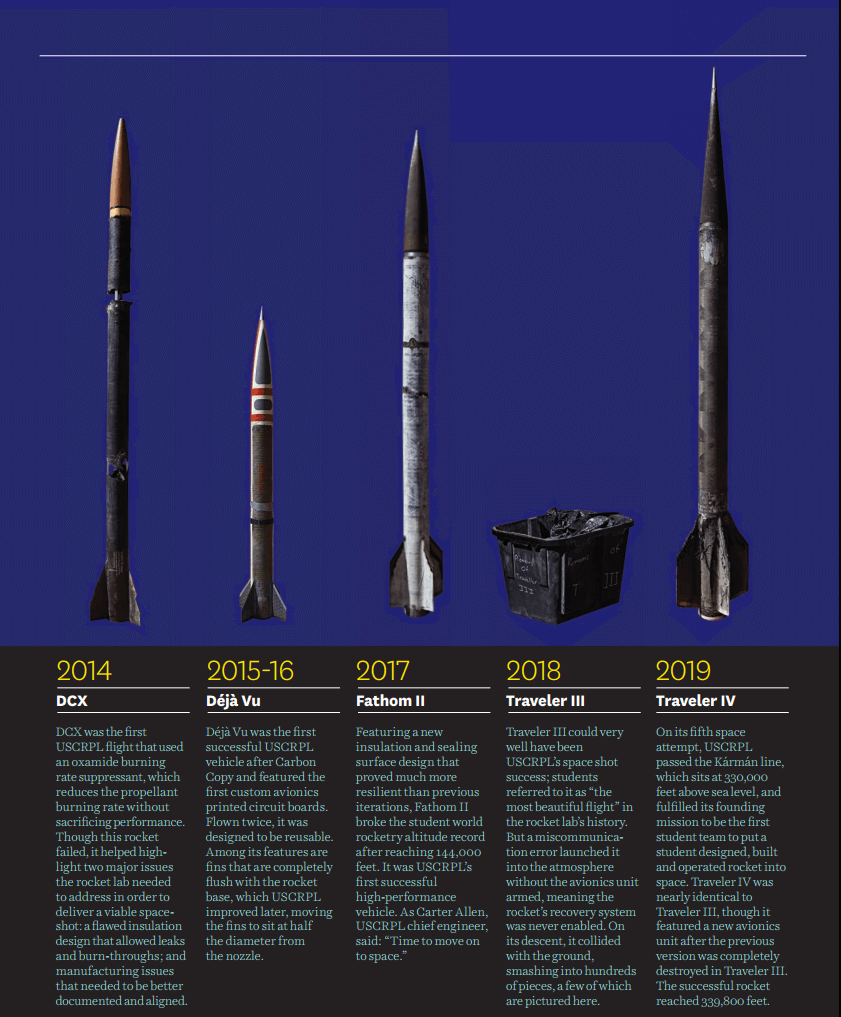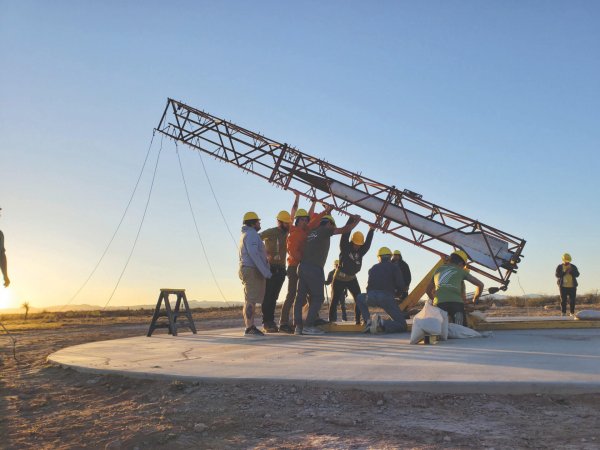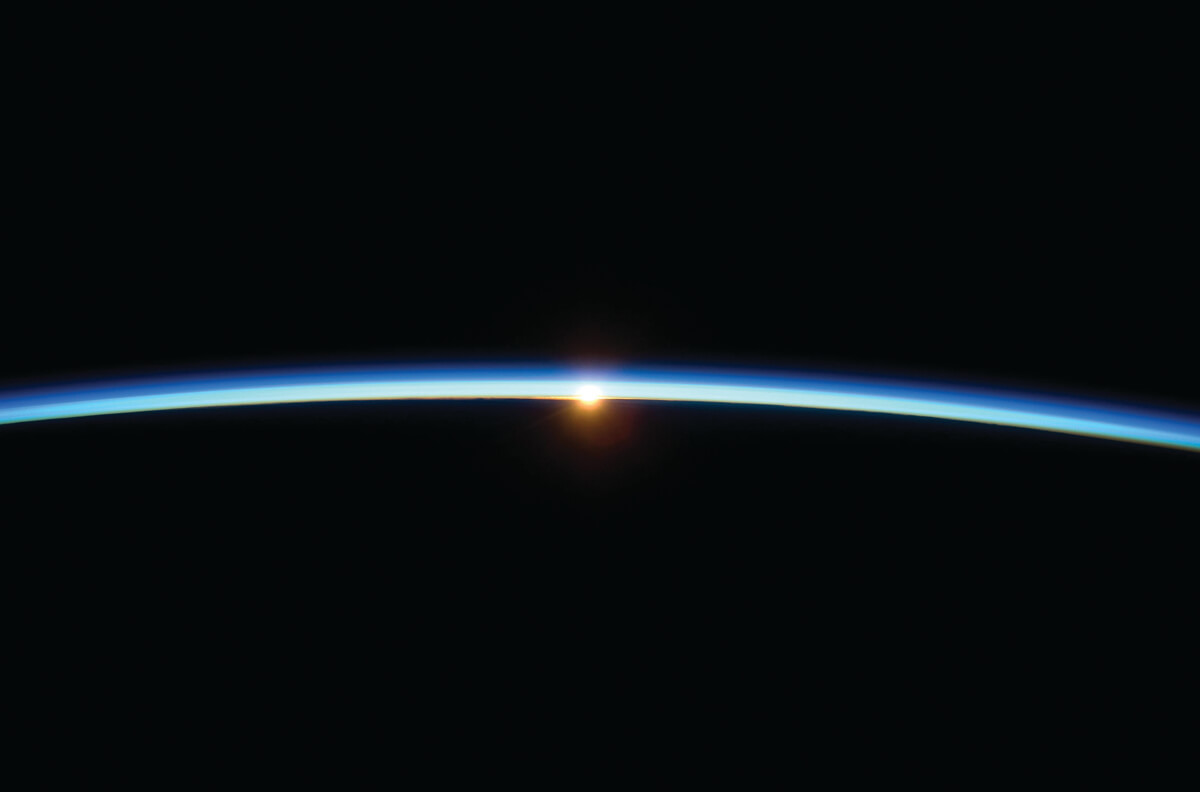Space or Nothing


Five weeks before the launch of Traveler III, Lauren Potterat made a controversial decision.
The astronautics student and lead software engineer on the USC Rocket Propulsion Laboratory’s avionics team decided to scrap 10 years of legacy code and overhaul Traveler’s avionics software. Though the software was thick with history, Potterat felt it had not evolved with USCRPL’s increasingly complex rocketry hardware and could hinder the lab’s dreams of reaching space. The timing — to anyone else — might’ve seemed poor, but for Potterat it was perfect. “I know we can make this better than it currently is,” she recalled saying. “And the time is right now.”
On the night of Sept. 28, 2018, there was a full moon hanging above the dusty, arid landscape of Black Rock Desert, Nevada. USC Viterbi students had traveled 600 miles and endured six hours of unplanned repairs to their trailer, but still, that night, they were optimistic. This was a moment 14 years in the making. Finally, USCRPL would achieve its founding mission: the first student team to design, build and launch a rocket into space.
Then, after just a few hours of sleep, came the dust storms.
Just as the dust cleared, the team initiated its launch sequence. The crowd of 100 people included more than a dozen spectators. The excitement was palpable, with eager voices chiming in with words of encouragement.
“We poured everything we had into it,” Potterat said. “This was our space shot.”
But in the midst of aberrant noise and high-frequency nerves, the words “avionics hold” were misheard over the radio as “avionics go.” Traveler III was ignited seconds too early, thrust into the sky with the newly constructed avionics unit still unarmed.
Avionics are often referred to as a rocket’s brains and are critical in determining the rocket’s flight path. During the Traveler III launch, the avionics unit was in standby mode to avoid accidentally triggering a launch sequence be.fore liftoff. The quick and premature ascent of Traveler III into the sky meant there was no time to turn the unit on. Not only did the rock.et fly blind, but without an ability to communicate with the recovery system, it had no chance of landing intact.
Five and a half minutes after launch, Traveler III plunged from the sky, smashing into hundreds of elemental pieces. Worse yet, though the students were nearly certain they’d made their goal of space, without a record of the data, there was no way to prove it.
“We all said to each other, ‘I can’t believe what just happened,’” Potterat said. In the immediate aftermath, email chains went silent. “This represented a lot of money and time, and it was ultimately human error that killed it, not the technology,” Potterat said.
After all the work, all the 40-plus hour weeks – all undone by a single, confused syllable. Some students wept openly. It would be seven months before they could try again.
Crossing Kármán
After Traveler III, the team had two choices: give up or brush itself off and do it again — better.
“Rocketry is difficult and unforgiving,” said Dennis Smalling, B.S.’19, former lead engineer for USCRPL. “Little mistakes can have catastrophic consequences. This is true for small-time amateurs, universities, multibillion-dollar companies and government programs. What defines a successful program is not the ability to never fail, it is the ability to learn, to persevere, to improve and to keep trying.”
It took seven grueling months to recover, rebuild and troubleshoot. But the lessons learned by the rocket lab, and the resilience inspired, were invaluable.
The Traveler III launch exposed members of USCRPL to how underprepared they had been. For Traveler IV’s launch, they sought to leave little to chance.
“By the time we woke up on Easter Sunday, we had fully integrated the avionics and recovery subsystems six different times on two different sites,” said Ava Badii, then member of the USCRPL recovery team. “Nearly the same flight configuration was flown on Traveler IV as on Traveler III, but with greater confidence.”
At 8 a.m. on April 21, about 70 members of the student-run team assembled under a clear New Mexico sky at Spaceport America, a launch site used by industry juggernauts like SpaceX and Virgin Galactic. Sunstruck, parched and anxious, they made the final preparations for their fourth version of space shot vehicle Traveler, which they’d dubbed “A New Hope.”
Joined by 40 alumni and spectators, USCRPL members listened with eager anticipation as Traveler IV, their 8-inch diameter, 13-foot tall rocket, erupted out of the launch tower. Hushed gasps could be heard from the crowd, who had been ordered into silence to allow communication between the operations team, the avionics team and the rocket itself. Indeed, everyone remembered Traveler III.
But the fourth time was the charm.
Traveler IV rapidly accelerated at over 17g’s to its top speed of 4970 ft/s, or Mach 5.1. USCRPL’s avionics system recorded the flight using its onboard sensors and deployed the vehicle’s parachute at apogee, allowing the rocket to safely glide down to earth.
In total, the flight lasted a triumphant 11 minutes, during which the USC Rocket Propulsion Laboratory became the first undergraduate team to design, build and successfully launch and recover a rocket past the Kármán line. In doing so, USCRPL more than doubled its previous student world altitude record set by Fathom II in 2017, when it reached a height of 144,000 feet.
“Traveler IV was an incredible success for USCRPL,” Smalling said. “After nearly 15 years and over a million hours of work, we have finally achieved our goal of being the first student group to launch the first student-designed and -built rocket past the Kármán line.”
The first rocket to cross the Kármán line — the recognized boundary between the Earth’s atmosphere and space that sits at 330,000 feet above sea level — was the German V-2 rocket in 1942. So began the space race between nations. This crept through to private companies like SpaceX and eventually to college campuses. Student teams from Princeton, MIT, UC Berkeley and Boston University were among those competing to be the first to reach space. Two teams in particular, HyEnD, at the University of Stuttgart, and DARE, at Delft University of Technology, have provided immense competition and inspiration to USCRPL.

Genesis of a Dream
The journey to space was paved by USCRPL’s founder, Ian Whittinghill, B.S. ’07, M.S. ’08, now chief designer and program manager at Whittinghill Aerospace.
As an aerospace engineering major, Whittinghill was captivated with the “romance” of engineering. “The fact that you could build something and maneuver around space with this education was incredible,” he said. He enrolled at USC Viterbi in 2003 and quickly found a group of like-minded students who liked to build things that could fly. With support from Dan Erwin, chair of the Department of Astronautical Engineering., Whittinghill prepared a proposal for the student rocket lab. Bundled into new funding plans for a fledgling astronautics department, the proposal was approved by C. L. Max Nikias, then the dean of USC Viterbi, in 2004.
“I cannot believe the resources they trusted me with from that moment,” Whittinghill said. “Lab space on campus is one of the biggest commodities. As a sophomore, I asked for all this — money, space — and they gave it to me.” To start, USCRPL received about $30,000 annually, according to Whittinghill.
In the early days, a dozen or so rotating members would lend a hand, but sometimes Whittinghill had to bribe them with lunch. That is, until USCRPL’s first rocket, Del Carbon, named after the carbon fiber material it was built with and late nights designing at Del Taco, successfully launched in May 2006 to a height of 7,000 feet.
“Driving out 15 hours to a launch site, completely exhausted and seeing our rocket lift up was a feeling of pure joy,” Whittinghill said. “Chasing that feeling will always be a part of rocket lab.”
Keeping the goal of space in mind, the team identified key components required for a space-bound rocket and began designing projects that would validate the design of each component.
“Throughout the rest of my time as the lead of rocket lab, we just kept nibbling away and proving out pieces,” Whittinghill said. “By the time I left, we had a pretty good design for Traveler.”
Learning from Failure
But there were challenges along the way. As the student team grew from about a dozen central members in 2005 to about 40 in 2008, there was an increasing need for project management. Meanwhile, as the rockets began to fly higher and faster, it became more difficult to get the appropriate approvals. Unlike with lower-performing vehicles, which reach much lower altitudes, a space-shot vehicle like Traveler IV requires approval from the Federal Aviation Administration and the Bureau of Land Management. To receive such approvals, students have to submit detailed specifications, including a description of all rocket systems, and demonstrate that the vehicle is of sound design.
Fortunately, the agencies have been supportive. “The fact you have a bunch of dirt-poor students who can scratch together the answers to the paperwork, and Elon Musk, who is a billionaire, and both can get a launch license is incredible,” Whittinghill said.
At the same time, as USCRPL grew larger and more ambitious, it was essential to balance student ambition with safety and security.
“Balancing student motivation and initiative with safety is one of the principle challenges that faces any university supporting highly energetic rockets,” said David Barnhart, research professor in astronautics and director of the Space Engineering Research Center at USC Viterbi. Barnhart is also the faculty liaison to student rocketry groups at USC.
USCRPL has worked on 21 rockets since 2005. When they launched Traveler in 2013, the group believed it would help USCRPL realize its founding mission of becoming the first student-built rocket to reach space. But after the unsuccessful launches of Traveler I and Traveler II (2014) — each failure caused by issues with the rocket’s motor case — the team decided to take a step back.
“At this point, the students were wondering if the current motor design was even enough,” Badii said. The simple answer: it wasn’t.
One issue the team investigated was burn-throughs, which led members to revisit the design of the internal thermal protection system. This system is meant to protect the carbon-fiber motorcase from the heat generated by the motor. Adding a rubber layer as an extra barrier between the heat source and the motorcase, USCRPL believed they had fixed the issue. However, when they launched Fathom in 2015 using this new “rubber ducky” design, the rocket failed four seconds into flight.
After discovering heat was still leaking through the rubber layer, the students planned a series of static fires meant to validate a new, more robust motor design for Fathom II. The resulting design solved issues with sealing, led to satisfactory compression of the propellant grains and prevented burn-throughs.
Changes in avionics software, from significant debugging to reorganization of software architecture, as well as development of better manufacturing procedures, also contributed to the final design used for Traveler IV. Every rocket played a role, every iteration proving out a piece of the puzzle.
“Failure happens in rocketry,” Badii said. “You can never say with full confidence that something will 100 percent work.” Of course, students struggled with feelings of despair after Traveler III, she shared, but afterward, they didn’t wallow. They came back together and said, “Now let’s see what we can do.”
The Next Horizon
There have been 15 USC graduations since Whittinghill conceived this “impossible” dream, and in recent years, it’s become a common sight to see USCRPL students with the words “Space or Nothing” emblazoned on their graduation caps.
Like any mantra, “Space or Nothing” carries different interpretations. That which seems to best capture its essence is the Revolutionary War slogan “Give me liberty or give me death!” For the students of USCRPL, space has always been and will always be a part of their mission.
Even having achieved their founding mission with Traveler IV, that revolutionary zeal for space is far from extinguished.
“Knowing we have the capacity to go to space doesn’t mean we will stop there,” Badii said. “At the same time, there are a lot of interesting things we can do at lower altitudes.”
With a rocket named Poise, USCRPL is testing a new propellant, for instance. This bimodal propellant will alter the ratio of particle sizes of the ammonium perchlorate, offering a lower burn rate than the Traveler propellant. The team is also working on a nozzle design that uses 100 percent carbon phenolic, instead of a combination of carbon phenolic and graphite. This would reduce machining time and make nozzle manufacture easier.
In the end, it seems that rocket lab isn’t really about space at all. Over the years, a culture has developed that pulls people in and never lets them go. For Potterat, who began as a computer science major before switching to astronautical engineering, the allure of USCRPL was undeniable. “You can go in at any time of the day or night and you will see people there. It is a home away from home for us all,” she said.
For students past and present, the USC Rocket Propulsion Laboratory represents limitless exploration, innovation without bounds. Said Potterat: “We can take ideas that sound crazy and put them into action. Even when things seem like they are impossible, you continue and work to build a future that doesn’t yet exist.”
“The payoff is everything,” Badii added. “And now we know — forgive me for sounding cheesy — the sky is no longer the limit.”
Two USCRPL Alums Seek to 3-D Print Entire Rockets
The USC Rocket Propulsion Laboratory has served as a training ground for many USC Viterbi alums, including Relativity Space co-founders Tim Ellis, B.S. AME ’12, M.S. AME ’13, and Jordan Noone, B.S. AME ’14. Now, they’re poised to transform the entire spacecraft industry.
The two met in 2010 as USC undergraduates. Ellis, who was just named one of MIT’s “35 Innovators under 35,” developed the first new rocket design code for USCRPL following Ian Whittinghill’s departure. Noone spent two years as the head of USCRPL, supervising five launches, including two space shots.
USC Viterbi Dean Yannis Yortsos said: “In 2012, Jordan gave me a proposal to support USCRPL. He said, ‘If you give us $50,000, we’re gonna go to space.’ When they went to the desert to launch their latest rocket, it went about 500 feet before exploding. Instead of giving up, they returned to the lab to see what went wrong. Months later, they came back and said: ‘If you give us $50,000, we’re gonna go to space.’ They were resilient and learned from their failures. As a result, they accomplished their goals.”
Relativity Space’s mission to build rockets “in days instead of years” using 3-D printing raised it more than $10 million in funding from Silicon Valley investors in less than six months. USC Viterbi’s Venture Fund also contributed funds. Relativity Space is now on track for its first orbital launch. “That’s going to be a huge milestone, not just for the company, but for the world,” Ellis said. “It’ll be the first time an entirely 3D printed product is flown to space.”




